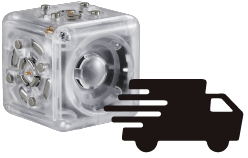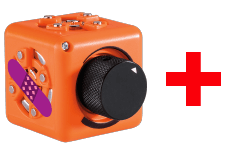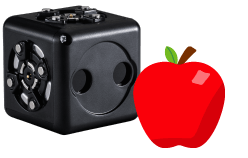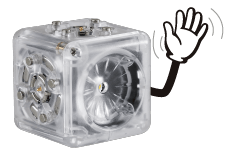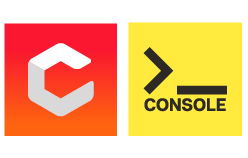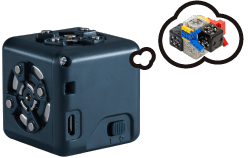Grades 1–3.
Meet Your Cubelets. > Scope and Sequence.
About.
This scope and sequence is designed for primary students in grades 1-3. Each of the 10 lesson are intended to last 45 minutes and are designed as a two-week introduction to Cubelets so all students are familiar with the learning tool. Please use your professional judgment in deciding when you need to repeat a lesson, skip a lesson, or combine two lessons based on your class and your students. View the Google Docs version here.
Jump to...
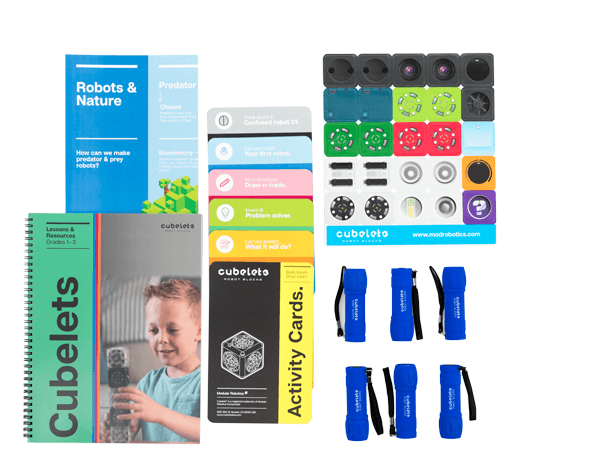
Want a printed lesson book?
Get this content and more great resources when you add a Cubelets Lesson Plan Bundle to your collection.
Cubelets Open Play.
Outline.
Students play with Cubelets naturally.
- As magnetic blocks.
- Turning the battery on and off.
- How to work in partners/small groups.
Objectives.
Students will use their natural curiosity to explore Cubelets.
Objectives.
Teachers look for:
- Student collaboration skills.
- Turning the Battery on and off.
- Students noticing black SENSE blocks.
Robot Bodies and Human Bodies + Cubelets Sort.
Outline.
- Read “Boy+Bot” by Ame Dyckman.
- Students compare and contrast robots and humans.
- Play Red Light, Green Light
- Students sort Cubelets by type. (SENSE, THINK, and ACT)
Objectives.
Students will notice the similarities between human bodies and robot bodies and will sort Cubelets based on similarities.
Objectives.
Teachers listen for:
- Students remembering the definition of a robot.
- Students making comparisons between human bodies and robot bodies.
- Students sort by color.
Investigate SENSE & ACT Cubelets.
Outline.
- Read aloud “Robot Rumpus” by Sean Taylor.
- Investigate ACT Cubelets one by one.
- Investigate SENSE Cubelets one by one.
Objectives.
Students will investigate each ACT and SENSE Cubelet.
Objectives.
Teachers listen for:
- Group collaboration skills.
- Students testing each. Cubelet in multiple ways
- Clear explanations of what each Cubelet does.
- Accurate Cubelets vocabulary.
Building 3- and 4-Block Robots.
Outline.
- Remember the definition of a robot.
- Build Drive Bot with Distance SENSE.
- Students build 3- and 4-block robot constructions.
Objectives.
Students will practice flexible thinking by redesigning their robots for different jobs.
Objectives.
Teachers look for:
- Students count to three.
- Students rotate individual Cubelets within a robot.
- Students switch the order of blocks in their robot.
- Students remember the goal they are designing toward.
Modeling Robots.
Outline.
- Read Aloud “What is a Scientist?”By Barbara Lehn.
- Students build a variety of robot constructions.
- Students choose at least one to model.
- Students swap scientific drawings and attempt to build the robot that matches the image.
Objectives.
Students will practice scientific modeling by drawing models of the robots they build.
Objectives.
Teachers look for:
- Students drawing with unique properties in mind.
- Students use words to explain their drawings.
- Note: scaffold modeling with this worksheet.
Investigate Two SENSES.
Outline.
- Review Cubelets Vocabulary and Group Norms.
- Students investigate Cubelets constructions with two SENSES.
- Students discuss findings from the investigation.
Objectives.
Students apply their understanding of Cubelets to robots that use two SENSE Cubelets.
Objectives.
Teachers look for:
- Student collaboration skills.
- How many different robots students build with the same two ACT Cubelets.
- Students switch the order of Cubelet blocks in their robot.
- Students rotate individual Cubelet blocks within their robot to improve it.
- Students say “I wonder” and “What if?”
Investigate THINK Cubelets.
Outline.
- Read Aloud “The Hueys in What’s the Opposite?” by Oliver Jeffers.
- Students investigate what happens when they add the red INVERSE Cubelet to their robots.
- Students investigate what happens when they add the green PASSIVE Cubelet to their robots.
Objectives.
Students will apply the scientific method to investigate THINK Cubelets.
Objectives.
Teachers look for:
- Students test only one THINK Cubelet at a time.
- Students test THINK Cubelets multiple times with different ACT and SENSE Cubelets.
- Student collaboration skills.
- Students begin to apply THINK Cubelets using “what if” statements.
Cubelets Storytelling Part 1.
Cubelets Storytelling Part 2.
Outline.
- Read aloud “Rocket Writes a Story” by Tad Hills.
- Students build simple robot constructions with their group and choose one to write about.
- Draw a picture of their robot IN a story.
- Could be tied to seasons or holidays or special places or imaginations.
- Students plan and draft their story.
- Students share their stories with classmates.
Objectives.
Students will practice telling stories based on their understanding of how their Cubelet robot SENSEs and ACTs.
Objectives.
Teachers look for:
- Students describe their robot accurately.
- Students tell a story with a beginning, middle, and end.
- Students collaborate with peers.
Cubelets Challenges.
Outline.
- Read aloud “The Most Magnificent Thing” by Ashley Spires.
- Teacher gives challenges, students design to meet challenge constraints.
- Students draw models of their designs.
- Students share their responses to the challenges.
Objectives.
Students will use critical thinking skills to build a specific robot based on a description.
Objectives.
Teachers look for:
- Students understand the description of a robot.
- Students stay on task.
- Students collaborate with peers.
BONUS Act Out Cubelets.
Outline.
- Warm-up with a game of Red Light, Green Light.
- Then, In groups of three, one team builds a robot, the other team acts out the robot. Take turns switching off which team does which.
Objectives.
tudents will act out the Cubelets within a 3-block robot.
Objectives.
Teachers look for:
- Students remember what each robot block does.
- Students use collaboration skills.
- Students give constructive feedback to peers.








